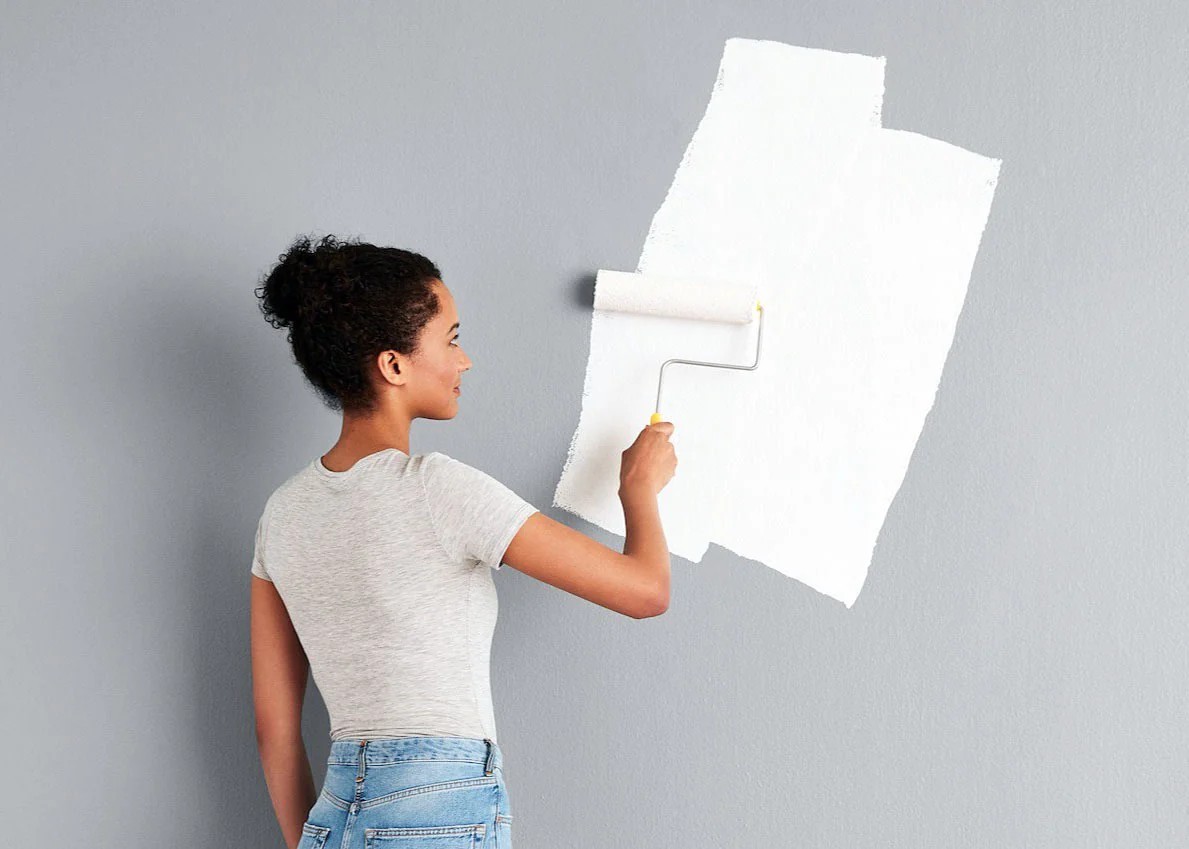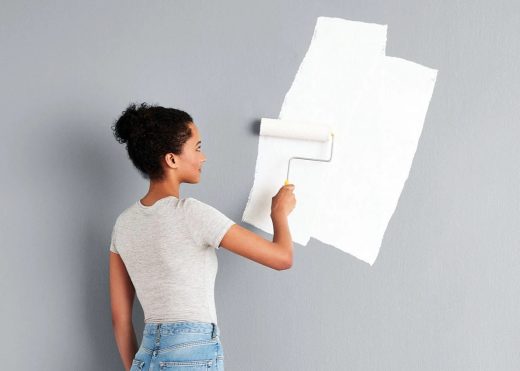Separating paint from primer tips, Contemporary home painters guide style, Property interior design decor
Separating Paint from Primer: The Painter’s Guide
5 April 2024
Hey there, DIY enthusiasts and home renovation warriors! I’m Ibby, a master painter with over 10 years of experience in the Sydney scene. As the founder of Parramatta Painters, I’ve helped countless homeowners breathe new life into their spaces through the transformative power of colour.
My team of highly skilled and professional residential painters Sydney have tackled projects of all shapes and sizes, from sleek modern apartments to stately heritage homes. And let me tell you, proper surface preparation is the secret sauce for a flawless, long-lasting paint job. That’s why understanding the difference between paint and primer is crucial.
So, grab a brush (or a roller, if you’re fancy), and let’s dive into the nitty-gritty details. By the end of this post, you’ll be a primer pro, ready to tackle your next painting project like a seasoned veteran.
Paint vs. Primer: The Showdown
At first glance, paint and primer might seem like interchangeable terms – they’re both liquids that end up on your walls, right? Well, not quite. While they’re cousins in the world of home improvement, they serve distinct purposes. Neglecting this crucial difference is a recipe for disaster (trust me, I’ve seen my fair share of painting catastrophes).
What is Paint?
Paint is the star of the show, the diva that commands attention with its vibrant hues and glossy finishes. It’s the final layer that transforms a bland canvas into a masterpiece. But here’s the catch: paint alone often struggles to adhere to surfaces, leading to peeling, chipping, and a whole lot of frustration down the line.
What is Primer?
Think of it as the base coat that prepares the surface for paint, creating a sturdy foundation for your chosen color to cling to. Primer helps fill in cracks, seals porous materials, and ensures that your topcoat goes on smoothly and evenly.
Skipping the primer step is like trying to build a house without a solid foundation – it might look okay at first, but eventually, cracks will start to show (literally and figuratively).
The Dynamic Duo: When to Use Paint and Primer
Now that we’ve established the key differences between paint and primer, let’s explore when to use each one (and when to use them together).
New Drywall or Bare Wood
If you’re starting fresh with new drywall or bare wood surfaces, primer is an absolute must. These materials are highly porous, meaning they’ll soak up paint like a sponge, leaving you with an uneven, splotchy finish. A good primer will seal the surface, creating a smooth canvas for your topcoat to shine.
Previously Painted Surfaces
Repainting over existing paint seems straightforward, right? Not so fast! If the previous paint job is in rough shape (peeling, chipping, or just plain ugly), a coat of primer will help even out the surface and provide a fresh start for your new color.
Stains and Odors
Dealing with stubborn stains or lingering odors? Primer to the rescue! Certain types of primers are formulated to block stains and neutralize odors, ensuring that your fresh paint job looks (and smells) pristine.
High-Moisture Areas
Bathrooms, laundry rooms, and other high-moisture areas can be a breeding ground for mold and mildew. A specialized moisture-resistant primer will create a barrier against these unwanted guests, protecting your paint job from unsightly blemishes.
The Painter’s Toolkit: Types of Primers
Not all primers are created equal. Just like paint, primers come in various formulations to tackle different surface types and challenges. Here are a few common varieties you’ll find in a professional painter’s toolkit:
Oil-Based Primers
Oil-based primers are the heavy-hitters of the primer world. They provide superior adhesion and stain-blocking capabilities, making them ideal for covering up stubborn marks or preparing surfaces for a fresh coat of oil-based paint.
Latex Primers
For most interior painting Sydney projects, a good old latex primer will do the trick. These water-based formulas are easy to apply, dry quickly, and play nicely with latex paints.
Stain-Blocking Primers
As the name suggests, stain-blocking primers are designed to seal in pesky stains, preventing them from bleeding through your fresh paint job. They’re a must-have for covering up water damage, smoke stains, or any other unsightly blemishes.
Specialty Primers
Depending on your project’s unique needs, you might also encounter primers designed for specific surfaces like metal, plastic, or even glazed tile. These specialized formulas ensure proper adhesion and long-lasting results on tricky materials.
The Painter’s Technique: How to Apply Primer
Proper primer application is just as crucial as choosing the right product. Here are a few pro tips to ensure a smooth, even base for your topcoat:
- Surface Preparation: Before you even think about cracking open that primer can, ensure your surface is clean, dry, and free of any loose debris or flaking paint. Proper surface prep is the foundation of a successful paint job.
- Thin, Even Coats: Primer should be applied in thin, even layers, allowing each coat to dry completely before adding the next. Thick, gloppy applications can lead to bubbling, cracking, and other unsightly issues.
- Cut In First: Always start by “cutting in” around edges, trim, and corners with a high-quality angled brush. This will ensure crisp, clean lines before you roll on the rest of the primer.
- Roller Technique: For larger areas, use a high-density roller cover and apply the primer in a V-shaped pattern, overlapping each stroke slightly for even coverage.
- Dry Time: Be patient and allow the primer to dry completely before adding your topcoat. rushing this step can lead to adhesion issues and a compromised finish.
FAQs: Tackling Common Primer Puzzles
Even with all this primer knowledge under your belt, you might still have a few lingering questions. Here are some frequently asked queries (and their answers, of course):
Can I use paint as a primer?
While some paints claim to be “paint and primer in one,” it’s generally not recommended to skip the dedicated primer step, especially on new or challenging surfaces.
How many coats of primer do I need?
The number of coats will depend on the surface type and the specific product you’re using. As a general rule, one or two coats of primer should suffice for most applications.
Can I tint my primer?
Yes, many primers can be tinted to a specific color, which can be helpful when trying to achieve a seamless finish or cover up stubborn stains.
Do I need to prime before repainting?
If the existing paint is in good condition and you’re using a similar type of paint (e.g., latex over latex), you may be able to skip the primer step. However, if the surface is damaged or you’re switching paint types, a fresh coat of primer is highly recommended.
Can I use the same primer for interior and exterior projects?
While some primers are versatile enough for both interior and exterior use, it’s always best to choose a product specifically formulated for your project’s location. Exterior primers are designed to withstand the elements, while interior primers focus more on adhesion and coverage.
Comments on this guide to Separating paint from primer: painter’s guide article are welcome.
Home Painting
Painting Your Home
Best paint colors for homes in 2024
What to know before picking a painting brush
Advantages of painting exterior of your house
Property
Residential Architecture
Comments / photos for the Separating paint from primer: painter’s guide advice page welcome






